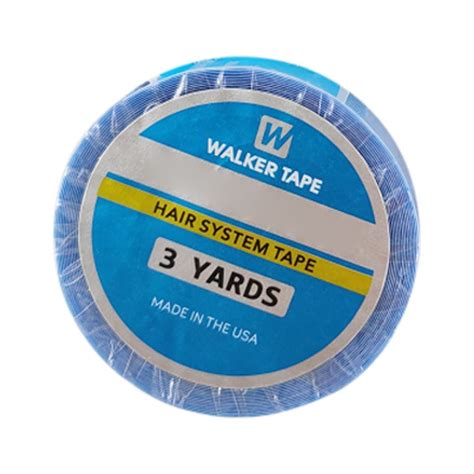Achieving a flawless lace front wig installation requires the perfect adhesive, and knowing which one to choose can be a daunting task. This comprehensive guide will help you navigate the world of lace front wig adhesives, ensuring you find the ideal product for your needs.

Understanding Lace Front Wigs
Before delving into adhesives, it’s essential to understand lace front wigs. These wigs feature a thin, transparent lace base that fades into the hairline, creating a natural-looking appearance. Lace front wigs come in various textures, densities, and lengths, allowing you to customize your look to your liking.
Why Adhesive Matters
Lace front wig adhesive serves two primary purposes:
- Hold: It keeps the wig securely in place, preventing slippage or movement throughout the day.
- Invisibility: When applied correctly, adhesive conceals the lace base, creating an illusion that the hair is growing out of your scalp.
Types of Lace Front Wig Adhesives
There are several types of lace front wig adhesives available:
- Medical Tapes: These hypoallergenic tapes are designed for sensitive skin and typically come in clear or white. They offer a strong hold and can last up to 5-7 days.
- Bonding Adhesives: These long-lasting adhesives create a durable bond between the scalp and the wig. They are resistant to moisture, heat, and movement, making them ideal for extended wear times.
- Glues: Glues provide the most secure hold but are the most difficult to remove. They are typically used for short-term applications or for individuals with excessive oil production.
- Spray Adhesives: These adhesives are applied in a mist form, allowing for easy and precise application. They offer a flexible hold that is suitable for daily use.
Choosing the Right Adhesive
Selecting the ideal lace front wig adhesive depends on several factors:
- Skin Type: Sensitive skin requires hypoallergenic adhesives to avoid irritation.
- Hair Texture: Different adhesives work better with different hair textures. Consult with a professional to determine the best product for your needs.
- Wear Time: Consider the duration you intend to wear the wig before choosing an adhesive.
- Activity Level: If you engage in strenuous activities, opt for a stronger adhesive to prevent slippage.
Applying Lace Front Wig Adhesive
To apply lace front wig adhesive effectively:
- Prepare the Skin: Cleanse the scalp and remove any oils or debris. Apply a thin layer of wig adhesive remover to the hairline to enhance adhesion.
- Apply the Adhesive: Use a thin brush or applicator to apply the adhesive along the hairline, avoiding contact with natural hair.
- Install the Wig: Place the wig over the scalp and press it firmly into place, ensuring good contact between the adhesive and the skin.
- Allow Drying Time: Follow the instructions provided by the adhesive manufacturer for drying time before styling the hair.
Removing Lace Front Wig Adhesive
Removing lace front wig adhesive requires caution to prevent damage to the hair or scalp:
- Soak: Saturate a cotton ball or gauze with wig adhesive remover and gently apply it to the adhesive along the hairline.
- Wait: Allow the adhesive remover to soften the adhesive for a few minutes.
- Lift: Use a thin spatula or your fingernails to gently lift the wig from the scalp, starting from the edges.
- Cleanse: Once the wig is removed, wash the scalp and hairline with lukewarm water and a mild cleanser.
Pros and Cons of Lace Front Wig Adhesives
Pros:
- Secure hold
- Natural-looking appearance
- Customizable hold strength
- Various options available for different needs
Cons:
- Can cause skin irritation or allergic reactions
- Requires proper application and removal techniques
- Can be time-consuming to apply and remove
- Some adhesives may damage hair or lace
Creative Applications of Lace Front Wig Adhesives
Beyond traditional use, lace front wig adhesives can also be utilized for creative applications such as:
- Special Effects Makeup: Using colored adhesives can create intricate and realistic prosthetic effects.
- Wound Simulation: By applying adhesives to create textures and scabs, you can simulate wounds for film or stage productions.
- DIY Projects: Adhesives can be used for bonding various materials, including fabrics, plastics, and wood. Explore their potential in arts and crafts.
Tables for Reference
Table 1: Comparison of Adhesive Types
| Adhesive Type | Hold Strength | Durability | Skin Sensitivity |
|---|---|---|---|
| Medical Tapes | Moderate | 5-7 days | Hypoallergenic |
| Bonding Adhesives | Strong | 2-4 weeks | Medium |
| Glues | Very strong | 1-2 months | Low |
| Spray Adhesives | Flexible | 1-3 days | Medium |
Table 2: Adhesive Recommendations for Different Skin Types
| Skin Type | Adhesive Type |
|---|---|
| Sensitive | Medical Tapes |
| Normal | Bonding Adhesives |
| Oily | Glues |
Table 3: Adhesive Drying Times
| Adhesive Type | Drying Time |
|---|---|
| Medical Tapes | 5-10 minutes |
| Bonding Adhesives | 15-30 minutes |
| Glues | 30-60 minutes |
| Spray Adhesives | 1-3 minutes |
Table 4: Adhesive Removal Guidelines
| Adhesive Type | Removal Method |
|---|---|
| Medical Tapes | Peel off gently |
| Bonding Adhesives | Dissolve with wig adhesive remover |
| Glues | So |
| ak with wig adhesive remover and use a spatula to lift | |
| Spray Adhesives | Wipe off with a clean cloth |
Conclusion
Choosing the right lace front wig adhesive is crucial for achieving a flawless installation. By considering factors like skin type, hair texture, wear time, and activity level, you can find the perfect product that meets your needs. With careful application and removal techniques, lace front wig adhesives can enhance your hair game and open up a world of creative possibilities.
